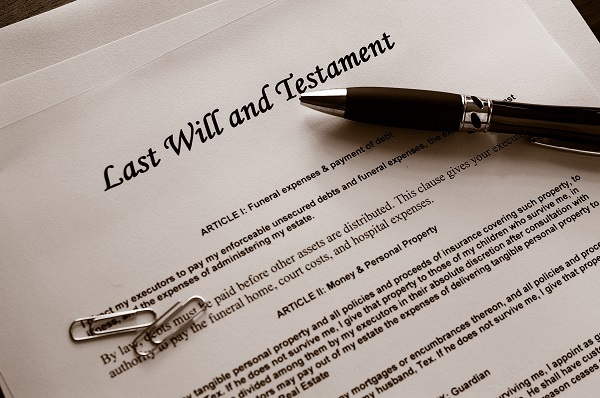Introduction: Bridging Civil Justice and Human Dignity
In the growing movement to make legal systems more equitable and people-centered, Chamberlain’s Law emerges as a modern legal philosophy that reimagines how civil disputes are resolved. Rooted in the principles of fairness, equity, and contextual reasoning, this legal approach doesn’t just focus on resolving disagreements—it emphasizes the preservation of human dignity in every legal outcome.
While most civil law frameworks aim to be objective and uniform, they often miss something vital: the human rights implications of legal decisions. Chamberlain’s Law fills that gap. Whether it’s a contract dispute, a property disagreement, or a claim of negligence, this doctrine ensures that individual rights, freedoms, and well-being are not sidelined in the name of technicalities.
In this article, we’ll explore how Chamberlain’s Law weaves human rights into the fabric of civil law, highlight its distinctive doctrines, and walk through real-world-style examples that show how this approach leads to fairer, more compassionate outcomes.
What Is Chamberlain’s Law?
Chamberlain’s Law is a forward-thinking civil law philosophy that challenges traditional legal systems to be more empathetic, inclusive, and justice-oriented. Unlike rigid frameworks that rely heavily on precedents and strict rule interpretation, Chamberlain’s Law looks at why something happened, how it affected people, and what a fair outcome truly looks like.
This model prioritizes:
- Human impact over legal formality
- Restorative outcomes over punitive ones
- Social justice over procedural uniformity
And most importantly, it places human rights at the center of civil litigation.
Traditional Civil Law vs. Chamberlain’s Approach to Human Rights
In most civil law systems, human rights considerations are usually limited to constitutional or international law contexts. Civil disputes—such as landlord-tenant issues or small business disagreements—are treated as matters of private law, with little attention paid to human dignity, emotional harm, or power imbalances.
Chamberlain’s Law challenges this divide.
See more: Conveyancing Sydney: How to Choose the Right Conveyancer for Your Property
It treats every civil case as a potential human rights issue, because:
- Access to shelter, safe employment, and fair treatment are human rights.
- Contracts can reflect exploitation.
- Property law can exclude or marginalize.
- Torts can inflict emotional and social damage, not just financial loss.
By expanding the lens of civil law to include human rights sensitivity, Chamberlain’s Doctrine delivers justice that feels just—not just legally correct.
Key Doctrines Linking Chamberlain’s Law to Human Rights
1. The Doctrine of Dignity First
This foundational doctrine holds that every legal decision must uphold the inherent dignity of each person involved. Courts and mediators are trained to ask: Does this outcome respect the person’s dignity, regardless of legal fault?
Example:
A migrant worker sues a property manager for locking them out over unpaid rent. Under traditional law, the landlord may have rights to eviction. But Chamberlain’s court evaluates:
- Was due process followed?
- Did the tenant have access to alternative housing?
- Were language and legal barriers considered?
The court may rule in favor of the tenant’s right to housing and due process, even while recognizing the landlord’s financial interest.
2. The Doctrine of Equitable Power Balance
Chamberlain’s Law acknowledges that many civil cases involve power disparities—employer vs. employee, corporation vs. consumer, landlord vs. tenant. This doctrine ensures that such imbalances are addressed in the legal process and in the outcome.
Example:
A gig worker signs a clause in a user agreement waiving the right to sue. The court reviews not just the clause, but whether the worker understood it, had real choice, or was economically coerced. If imbalance is proven, the court invalidates the clause and allows the case to proceed.
This supports economic justice and individual autonomy—both core human rights.
3. The Right to Be Heard (Participatory Justice)
Access to civil justice is a human right—but for many people, especially the marginalized, legal processes are intimidating and inaccessible. Chamberlain’s system simplifies court procedures and actively encourages participation, ensuring everyone has a voice.
This means:
- Hearings are held in plain language.
- Informal evidence is accepted.
- Self-representation is supported.
- Cultural sensitivity is prioritized.
Example:
An elderly woman sues a contractor for unfinished work but cannot produce a formal contract. Under Chamberlain’s Law, her oral testimony, photos, and a neighbor’s witness statement are admitted. The judge rules in her favor, upholding her right to be heard, regardless of paperwork.
4. The Doctrine of Social Restoration
Instead of focusing solely on fault and damages, Chamberlain’s Law emphasizes repairing relationships and restoring community harmony. When civil disputes cause psychological harm or social exclusion, this doctrine encourages non-monetary remedies that support healing.
Example:
A teacher is falsely accused of misconduct by a parent on social media. Rather than simply issuing financial penalties, the court orders:
- A public retraction and apology
- Community service by the accuser
- Optional counseling for both parties
The aim? Protect the teacher’s reputation and mental well-being while reintegrating the parent into the school community.
5. The Doctrine of Non-Discrimination
Chamberlain’s Law builds anti-discrimination protections directly into civil proceedings. It ensures that legal outcomes do not reinforce racial, gender-based, cultural, or economic inequalities.
Example:
A housing provider is sued for denying rental to a single mother. The provider claims the child would cause property damage. The court investigates implicit bias, reviews broader patterns, and rules in favor of the tenant—defending her right to non-discriminatory housing access.
Real-World Scenario: The Contract Clause Challenge
Let’s consider a complete hypothetical that pulls these doctrines together.
Case:
A university student from a low-income background signs up for an online course. The enrollment contract includes a non-refund clause, even if the platform fails to deliver promised content. The student quits in frustration and demands a refund.
Traditional Law Outcome:
The court enforces the contract as signed. The student loses the case.
Chamberlain’s Law Outcome:
- Dignity First: The court asks whether enforcing the clause would place an undue burden on the student’s right to education.
- Equitable Power Balance: It finds that the student had little bargaining power and limited understanding of the terms.
- Participatory Justice: Testimonies from other students are heard, even without formal class-action.
- Social Restoration: The platform is ordered to refund the fee, issue clearer contracts, and offer access to updated course materials.
This approach defends educational access as a human right, not just a consumer transaction.

Why This Approach Matters Today
In a time when inequalities are widening and trust in institutions is fading, Chamberlain’s Law offers more than just legal reform—it offers legal compassion.
It recognizes that:
- Justice and human rights are inseparable
- Civil disputes often reflect deeper social issues
- Law should protect not only contracts, but people
By integrating human rights into everyday civil litigation, Chamberlain’s Law creates a system that cares as much about people as it does about rules.
Final Reflection: Law That Uplifts, Not Just Orders
Human rights shouldn’t be limited to dramatic courtroom battles or high-profile constitutional cases. They live in the everyday struggles people face—in rent disputes, broken agreements, and misunderstandings that carry real emotional weight.
Chamberlain’s Legal Doctrine reminds us that behind every case is a human story. And in every judgment, there’s a chance not just to resolve a problem, but to affirm someone’s dignity.
As legal systems around the world seek to become more inclusive, responsive, and just, Chamberlain’s Law may very well point the way forward—not just to win cases, but to build a fairer society for all.










